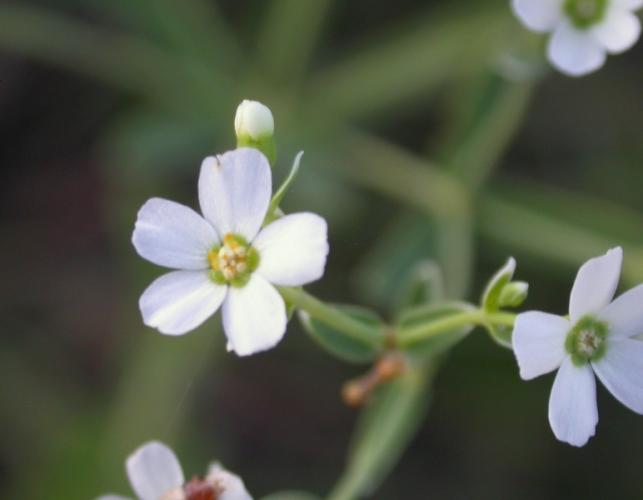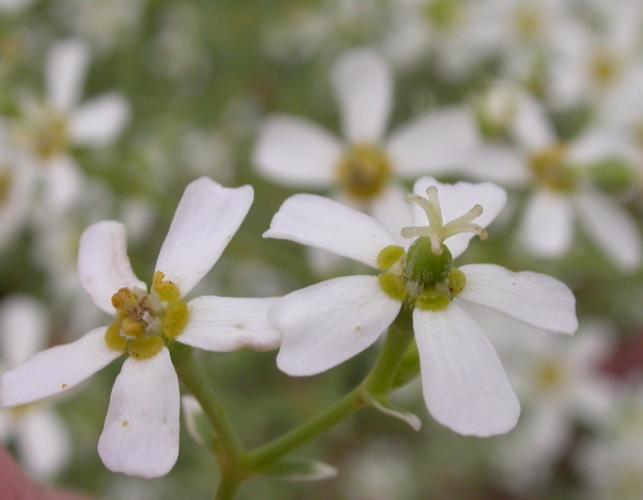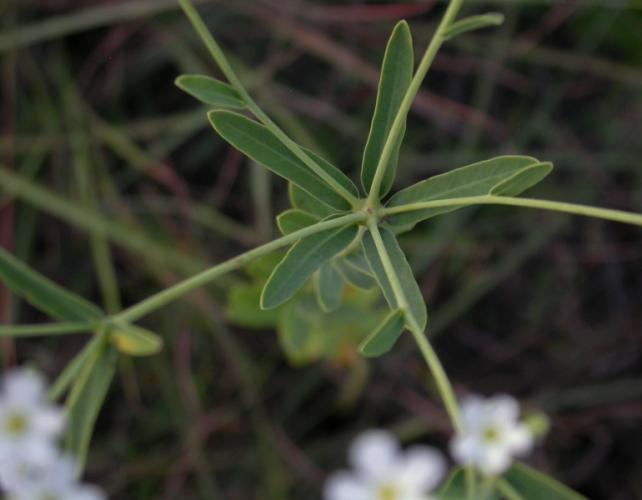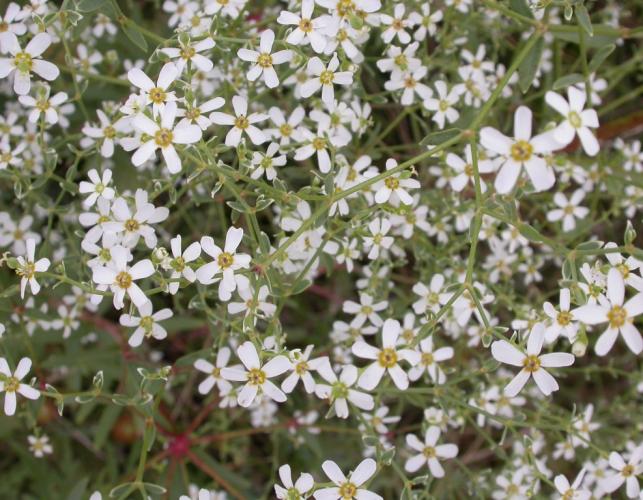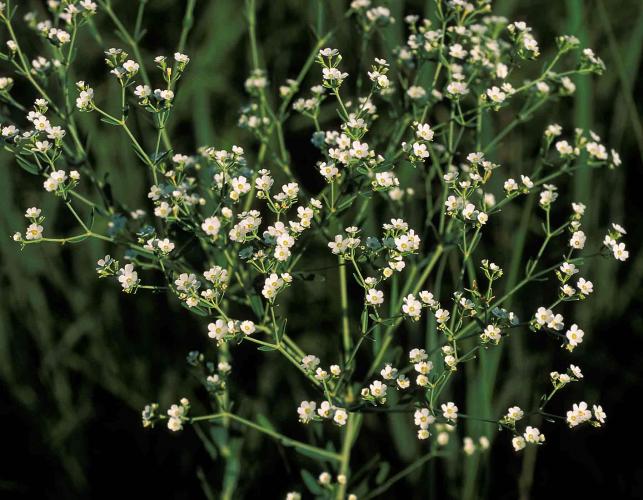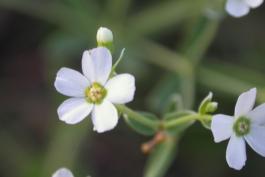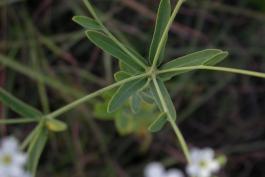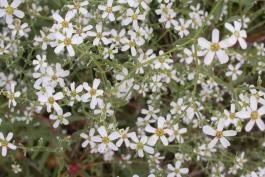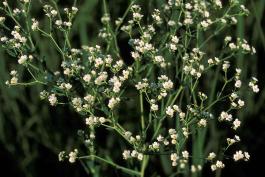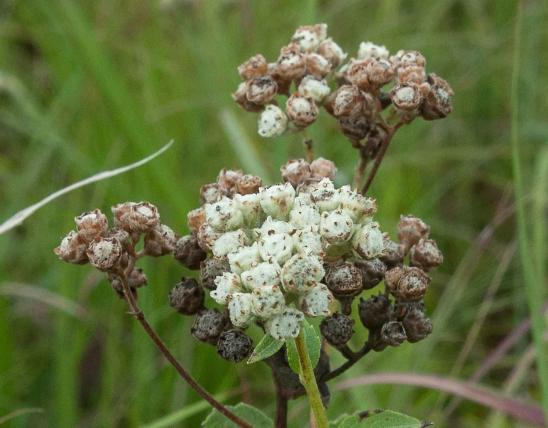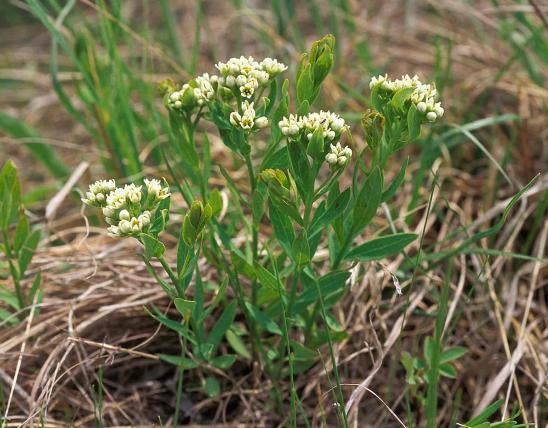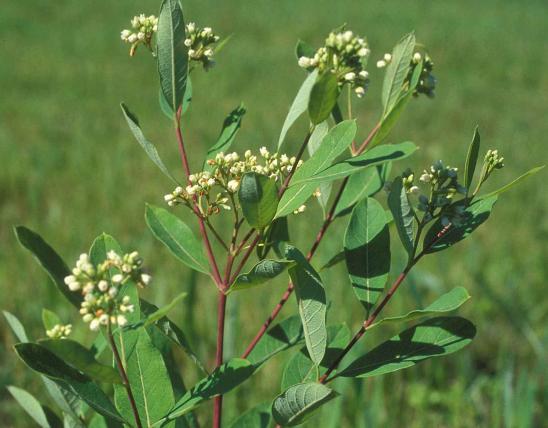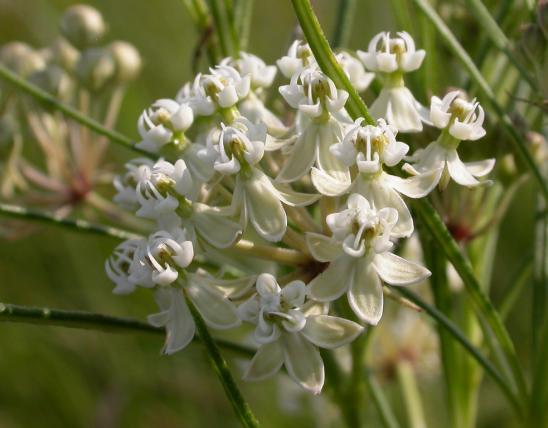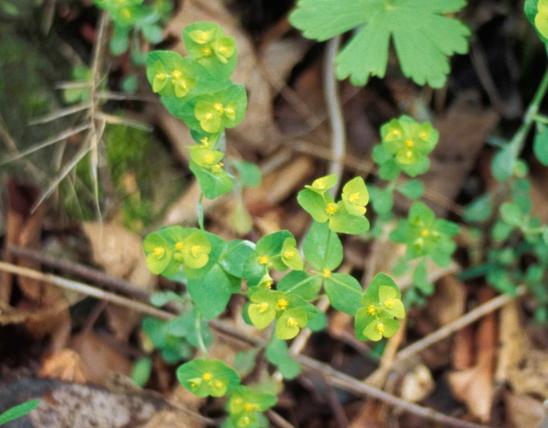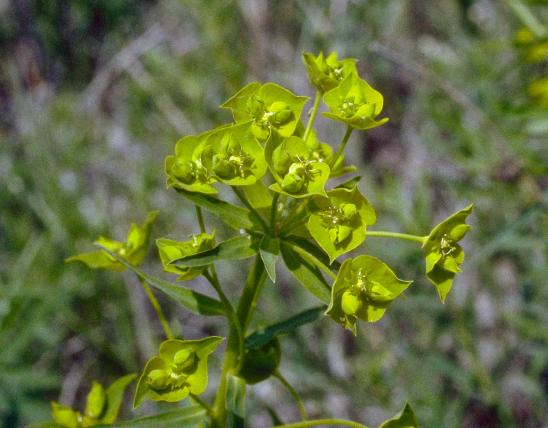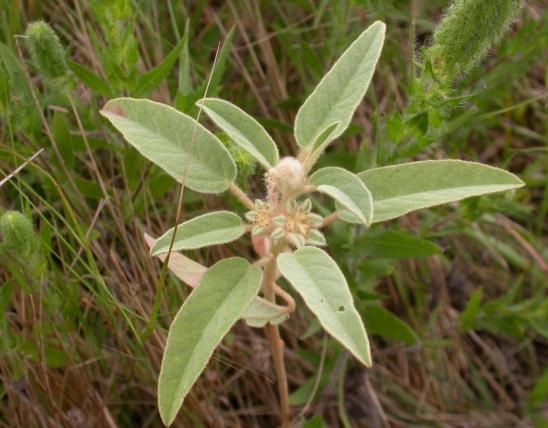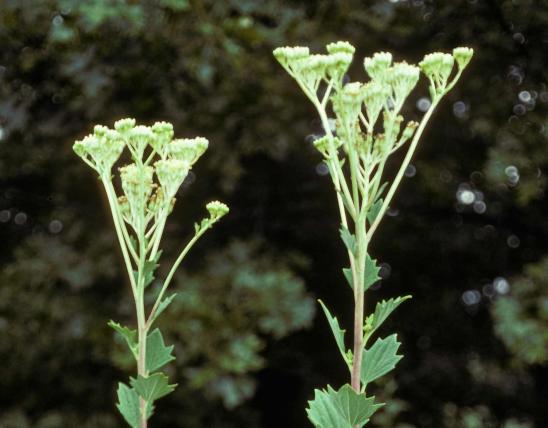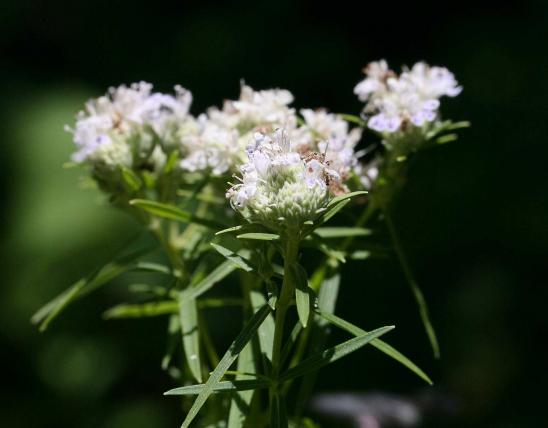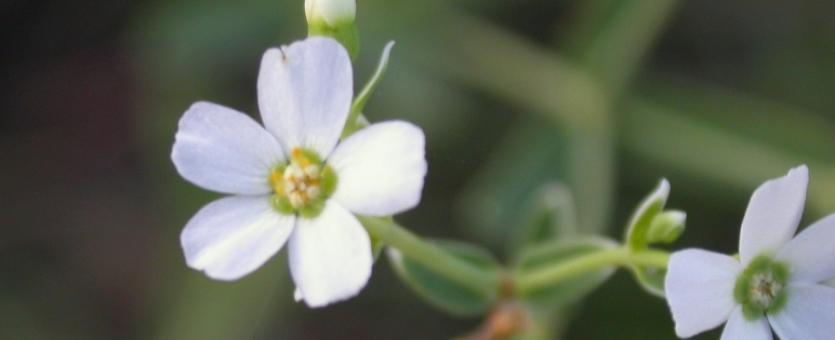
Flowering spurge is a smooth, leafy perennial with a much-branched top. Flowers: when growing on poor ground, only a few, but in rich soils plants may spread as wide as they are tall with a large inflorescence. The floral cups have 5 white false petals surrounding tiny yellow male flowers and a single female flower (this arrangement, called a cyathium, is typical of flowers in the spurge family). Blooms May–October. Leaves alternate on lower stems, sessile, narrowing toward base, ovate, with smooth edges. Leaves at the branching points are in whorls. Leaves in inflorescence are opposite. Leaves and stems are usually hairless but some plants have hairs. The sap is milky and can be skin-irritating.
Height: often to 3 feet.
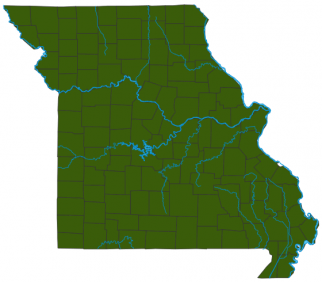
Statewide.
Habitat and Conservation
Occurs in fields, glades, prairies, open woods, rocky places, roadsides, and railroads.
Status
Spurges are members of the family Euphorbiaceae. Other plants in this family include poinsettias, castor beans, cassava, the Para rubber tree (whose sap is a source of natural rubber), the houseplant called "crown of thorns," and several other cactus lookalikes often used as houseplants. Another relative, prostrate spurge, commonly grows in sidewalk cracks. Common traits include the curious floral arrangement, and milky, skin-irritating sap.
Human Connections
As with many other plants containing toxic chemicals, Native Americans used flowering spurge medicinally, for treating constipation, arthritis, and other ailments. The pretty sprays of white flowers look much like the florist's "baby's breath." Toxins in the leaves can kill cattle.
Ecosystem Connections
Wild turkey eat several parts of this plant; prairie-chicken, quail, and mourning doves eat the seeds. Deer browse the leaves in spring and summer. Several types of wasps and other insects visit the flowers, and ants might help distribute the seeds.
